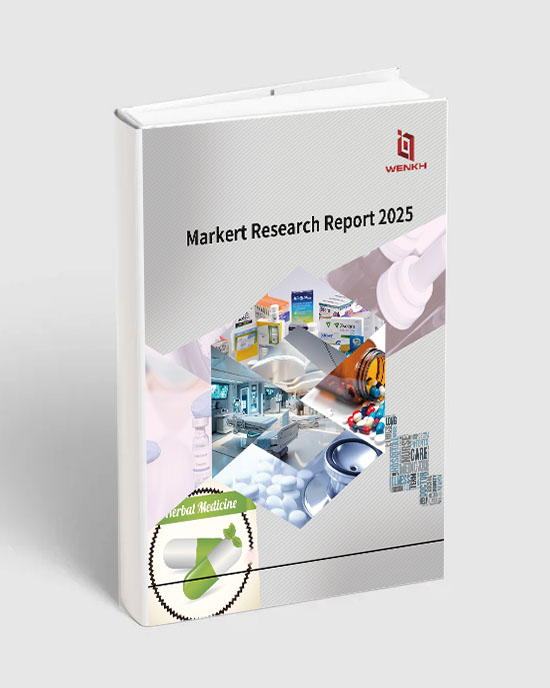
Global Phosphodiesterase Type 5 (PDE5) Inhibitor Market Competitors, Segment Types and Downstream Applications Research Report 2025



Research Summary
Phosphodiesterase Type 5 (PDE5) inhibitors are a class of drugs that block the enzyme phosphodiesterase type 5, which is involved in the regulation of blood flow in the penis. By inhibiting this enzyme, PDE5 inhibitors increase the levels of cyclic guanosine monophosphate (cGMP), leading to the relaxation of smooth muscle cells and the dilation of blood vessels. This mechanism enhances blood flow to the penile tissue, thereby facilitating and maintaining an erection in response to sexual stimulation. Commonly used PDE5 inhibitors include sildenafil (Viagra), tadalafil (Cialis), and vardenafil (Levitra). These medications are primarily prescribed for the treatment of erectile dysfunction (ED) and, in some cases, pulmonary arterial hypertension (PAH) due to their vasodilatory effects. PDE5 inhibitors have revolutionized the management of ED, offering effective and generally well-tolerated treatment options for many men.
According to WENKH research statistics, the global Phosphodiesterase Type 5 (PDE5) Inhibitor market size will reach 2,636.73 Million USD in 2025 and is projected to reach 3,199.02 Million USD by 2032, with a CAGR of 2.80% (2025-2032). Among them, the Asia-Pacific Phosphodiesterase Type 5 (PDE5) Inhibitor market is undergoing rapid changes, reaching Million USD in 2025, accounting for approximately % of the global market share. It is projected to reach Million USD by 2032.
The global Phosphodiesterase Type 5 (PDE5) Inhibitor market is highly competitive, with key market players including Eli Lilly, Pfizer, Bayer, Novartis AG, Merck, GlaxoSmithKline plc, Roche, AstraZeneca, BaiYunShan General Factory, SK Chemicals, Teva Pharma, Dong-A ST, Metuchen Pharma, Seoul Pharma, Vectura Group, etc. This report categorizes the competitive landscape of the global Phosphodiesterase Type 5 (PDE5) Inhibitor market into three tiers based on annual revenue, with the top three market players holding approximately % of the total market share.
This report provides an in-depth analysis of the global Phosphodiesterase Type 5 (PDE5) Inhibitor market, including market size, price trends, market status and future development prospects. It particularly focuses on the market share, product characteristics, pricing, sales revenue, and gross profit margin of major players in the global Phosphodiesterase Type 5 (PDE5) Inhibitor industry. Additionally, this report provides an in-depth analysis of the market status and future development trends of different product segments of Phosphodiesterase Type 5 (PDE5) Inhibitor and their downstream application fields.
In terms of data, this report includes a comprehensive time-series dataset. The historical data spans from 2020 to 2024, providing a solid foundation for analyzing past market trends. The year 2025 is used as a base year to accurately assess the current market landscape. Forecast data covers the period from 2026 to 2032, utilizing scientific analysis methods and models to offer forward-looking predictions and insights into the market's future development. This provides valuable reference information for industry participants and stakeholders.
The report covers countries including United States, China, Germany, Japan, France, South Korea, United Kingdom, India, Italy, Brazil, Mexico, Indonesia, Vietnam and South Africa. It particularly focuses on the sales revenue of Phosphodiesterase Type 5 (PDE5) Inhibitor in these countries, as well as the product segmentation and downstream application market size of each country. The report provides an in-depth analysis of the regional distribution and future development trends of the Phosphodiesterase Type 5 (PDE5) Inhibitor market. By considering local policies, this report evaluates the market prospects of Phosphodiesterase Type 5 (PDE5) Inhibitor in each country, aiming to help companies gain a comprehensive understanding of the industry characteristics and development potential in different regions, optimize regional business layout, and develop precise market strategies to achieve global development goals.
This report places a strong emphasis on data quality and reliability, utilizing diverse and extensive data sources to ensure the accuracy and validity of the information presented. Primary data collection involves multiple channels, including in-depth interviews with senior executives, industry experts, supply chain stakeholders, and end consumers. These interviews provide key insights into corporate strategic planning, industry policy interpretation, supply chain dynamics, and end-user experiences. Secondary data sources cover a wide range of authoritative statistics from government agencies, customs databases, industry associations, third-party paid databases, brokerage research reports, academic research findings, corporate annual reports, financial statements, real-time news updates, and relevant information from international organizations. These data sources serve as a solid foundation for verification and analysis.
Companies Covered
Eli Lilly
Pfizer
Bayer
Novartis AG
Merck
GlaxoSmithKline plc
Roche
AstraZeneca
BaiYunShan General Factory
SK Chemicals
Teva Pharma
Dong-A ST
Metuchen Pharma
Seoul Pharma
Vectura Group
Product Segment
Sildenafil
Tadalafil
Avanafil
Vardenafil
Product Application
Hospital
Retail Pharmacy
Online Pharmacies
Others
Chapter Scope
Chapter 1: Product Statistical Scope, Product Segmentation Types and Downstream Applications, Overall Market Size, Current Status and Development Prospects
Chapter 2: Global Phosphodiesterase Type 5 (PDE5) Inhibitor Industry Chain Analysis
Chapter 3: Global Phosphodiesterase Type 5 (PDE5) Inhibitor Industry Environment Analysis and Porter's Five Forces Analysis
Chapter 4: Analysis of the Competitive Landscape of Major Companies in the Global Phosphodiesterase Type 5 (PDE5) Inhibitor Market (Market Share, Product Revenue Comparison, Tier Division, Corporate Expansion and M&A Trends)
Chapter 5: Analysis of Global Major Companies (Company Profiles, Product Specifications and Features, Product Revenue and Product Gross Profit Margin)
Chapter 6: Global Phosphodiesterase Type 5 (PDE5) Inhibitor Market Analysis by Countries, Product Segment and Downstream Application
Chapter 7: United States Phosphodiesterase Type 5 (PDE5) Inhibitor Market Size, Product Segment, Downstream Application Analysis
Chapter 8: China Phosphodiesterase Type 5 (PDE5) Inhibitor Market Size, Product Segment, Downstream Application Analysis
Chapter 9: Germany Phosphodiesterase Type 5 (PDE5) Inhibitor Market Size, Product Segment, Downstream Application Analysis
Chapter 10: Japan Phosphodiesterase Type 5 (PDE5) Inhibitor Market Size, Product Segment, Downstream Application Analysis
Chapter 11: France Phosphodiesterase Type 5 (PDE5) Inhibitor Market Size, Product Segment, Downstream Application Analysis
Chapter 12: South Korea Phosphodiesterase Type 5 (PDE5) Inhibitor Market Size, Product Segment, Downstream Application Analysis
Chapter 13: United Kingdom Phosphodiesterase Type 5 (PDE5) Inhibitor Market Size, Product Segment, Downstream Application Analysis
Chapter 14: India Phosphodiesterase Type 5 (PDE5) Inhibitor Market Size, Product Segment, Downstream Application Analysis
Chapter 15: Italy Phosphodiesterase Type 5 (PDE5) Inhibitor Market Size, Product Segment, Downstream Application Analysis
Chapter 16: Brazil Phosphodiesterase Type 5 (PDE5) Inhibitor Market Size, Product Segment, Downstream Application Analysis
Chapter 17: Mexico Phosphodiesterase Type 5 (PDE5) Inhibitor Market Size, Product Segment, Downstream Application Analysis
Chapter 18: Indonesia Phosphodiesterase Type 5 (PDE5) Inhibitor Market Size, Product Segment, Downstream Application Analysis
Chapter 19: Vietnam Phosphodiesterase Type 5 (PDE5) Inhibitor Market Size, Product Segment, Downstream Application Analysis
Chapter 20: South Africa Phosphodiesterase Type 5 (PDE5) Inhibitor Market Size, Product Segment, Downstream Application Analysis
Chapter 21: Research Conclusion
Chapter 22: Methodology and Data Source
Purpose and Value of the Report
Market Trend Insights: Analyze industry trends, market dynamics, and future growth potential to help companies forecast changes and develop strategic plans.
Competitive Landscape Analysis: Understand key players' revenue segmentation, strategies, market share, and business models to guide competitive decisions.
Investment Decision Support: Provide feasibility analysis through market size, growth rate, demand trends, and potential risks for informed investment decisions.
Target Customer and Demand Analysis: Examine consumer behavior, purchasing preferences, and pain points to optimize products and improve market penetration.
Policy and Regulatory Insights: Interpret relevant industry policies to ensure compliance and mitigate regulatory risks.
Business Model Optimization: Offer data-driven suggestions for enhancing business models and improving profitability.





